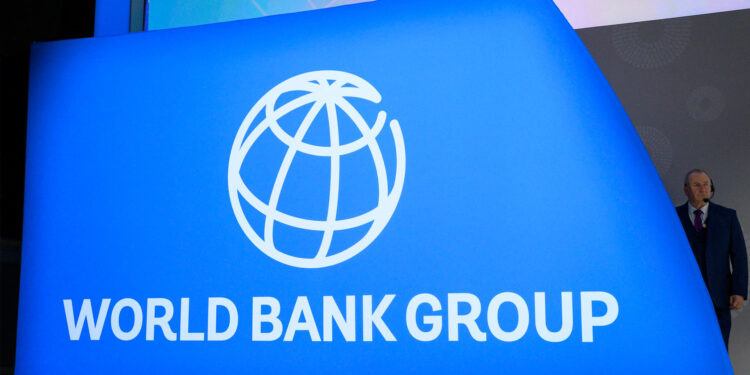The World Bank warned Thursday that sweeping US tariffs expected to reach 10% could dampen already weak global economic growth.
Global growth is likely to reach 2.7% in 2025, but it may lose 0.3 percentage points if US trading partners respond by imposing tariffs of their own, according to the bank.
US President-elect Donald Trump suggested:
- Imposing a 10% customs duty on imports.
- Punitive duties of 25% on imports from Canada and Mexico until the two countries crack down on drugs and immigrants crossing the border into the United States.
- 60% customs duties on Chinese goods.
On the other hand, some countries, including Canada, pledged to respond.
Exacerbating damage to global economic growth
The World Bank said that a simulation using a global macroeconomic model showed that a 10 percentage point increase in US tariffs on all trading partners in 2025 may reduce global growth by 0.2 percentage points for this year, indicating that the response from the targeted countries may exacerbate the damage. On growth.
He added that these estimates are consistent with other studies that have shown that a 10-point increase in US tariffs may “reduce the level of US GDP by 0.4%, while a similar response from trading partners may exacerbate the overall negative impact to 0.9%.”
But the bank said US growth could also increase by about 0.4 percentage points in 2026 if US tax cuts are extended, with only minor global impacts.
The Bank for International Settlements joined the World Bank to also warn of increasing “disagreements and fragmentation” in global trade, noting that the outbreak of a large-scale trade war between Washington and other countries is a “concrete risk scenario.”
The World Bank’s latest report on World Economic Prospects, which is issued twice a year, expected stable global economic growth at 2.7% in 2025 and 2026, the same growth rate in 2024, and warned that developing economies now face the weakest long-term growth prospects since 2000.
Performance of emerging markets and developing economies
The World Bank said that foreign direct investment in developing economies is now about half its level in the early 2000s, and that global trade restrictions are five times higher than the average between 2010 and 2019.
He added that growth in developing countries is expected to reach 4% in 2025 and 2026, which is much lower than pre-pandemic estimates due to high debt burdens, weak investment, slow productivity growth, along with the rising costs of climate change.
He continued that gross output in emerging market and developing economies is expected to remain more than 5% below its pre-pandemic trend by 2026, due to the pandemic and subsequent shocks.
World Bank chief economist Indermeet Gill said – in a statement – that “the next 25 years will be more difficult for developing economies than the past 25 years,” and he urged countries to adopt domestic reforms to encourage investment and consolidate trade relations.
The World Bank reported that economic growth in developing countries declined from about 6% in the first decade of the 21st century to 5.1% in the second decade of the 21st century, and averaged about 3.5% in the 2020s.
He pointed out that the gap between rich and poor countries is also widening after the average per capita growth rates in developing countries, excluding China and India, averaged half a percentage point lower than those in rich economies since 2014.
The gloomy forecasts are consistent with statements made last week by the Executive Director of the International Monetary Fund, Kristalina Georgieva, before the bank’s new forecasts, which are expected to be issued on Friday.
The World Bank said in its report that “developing economies may face strong unfavorable winds over the next two years.”
He added, “The state of extreme uncertainty in global politics may undermine investor confidence and restrict financing flows. Increased trade tensions may lead to a reduction in global growth, and persistent inflation may delay expected cuts in interest rates.”
The bank added that it expects more negative risks to the global economy, noting an increase in trade-disrupting measures – mainly implemented by advanced economies – and uncertainty about future policies that work to discourage investment and growth.
Average global trade in goods and services, which expanded 2.7% in 2024, is expected to reach about 3.1% in 2025 and 2026, but will remain below pre-pandemic averages.



